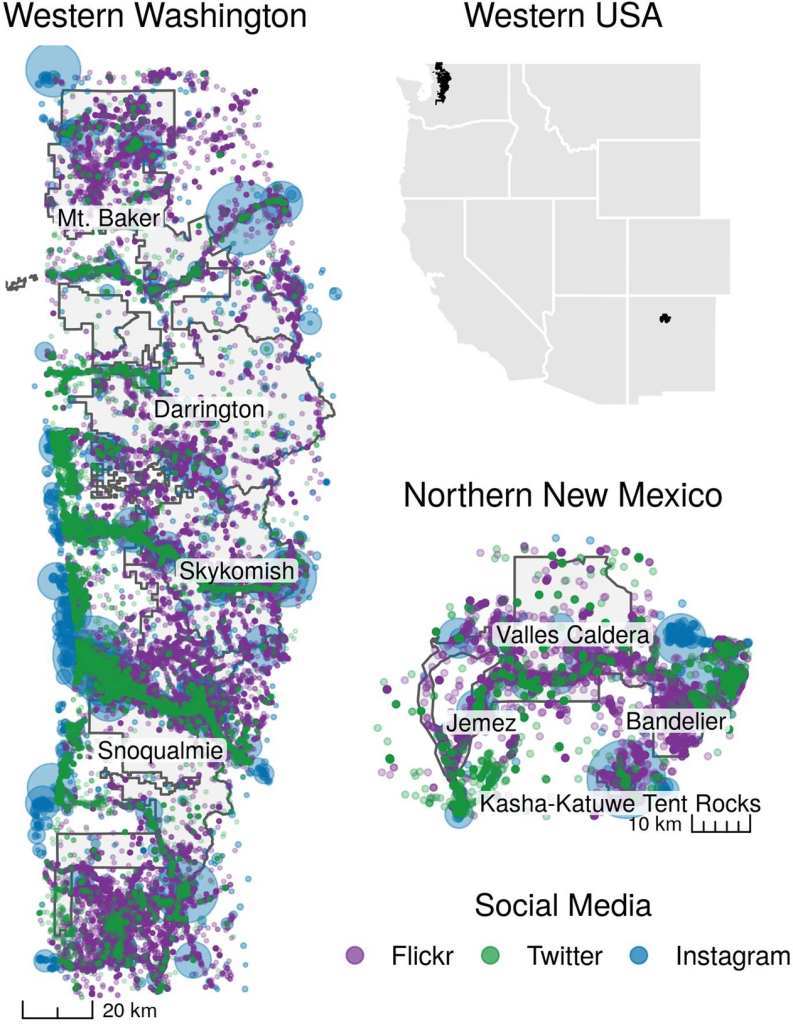Next-Generation Visitation Models using Social Media to Estimate Recreation on Public Lands
Citation
Wood, S. A., Winder, S. G., Lia, E. H., White, E. M., Crowley, C. S., & Milnor, A. A. (2020). Next-generation visitation models using social media to estimate recreation on public lands. Scientific Reports, 10(1), 15419.
Abstract

Outdoor and nature-based recreation provides countless social benefits, yet public land managers often lack information on the spatial and temporal extent of recreation activities. Social media is a promising source of data to fill information gaps because the amount of recreational use is positively correlated with social media activity. However, despite the implication that these correlations could be employed to accurately estimate visitation, there are no known transferable models parameterized for use with multiple social media data sources. This study tackles these issues by examining the relative value of multiple sources of social media in models that estimate visitation at unmonitored sites and times across multiple destinations. Using a novel dataset of over 30,000 social media posts and 286,000 observed visits from two regions in the United States, we compare multiple competing statistical models for estimating visitation. We find social media data substantially improve visitor estimates at unmonitored sites, even when a model is parameterized with data from another region. Visitation estimates are further improved when models are parameterized with on-site counts. These findings indicate that while social media do not fully substitute for on-site data, they are a powerful component of recreation research and visitor management.